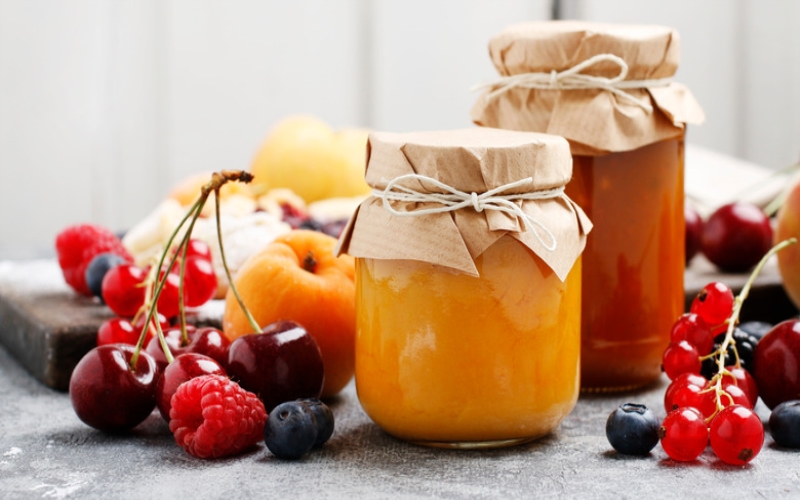Jam jars are not just vessels for preserving sweet spreads; they encapsulate tradition, craftsmanship, and the joy of homemade flavors. These iconic jars hold much more than just jam; they cradle memories of family recipes and seasonal bounty.
Features of Jam Jars:
Design and Material:
Glass Quality:
- High-quality glass ensures durability and maintains the purity of flavors.
- Amber or colored glass options protect jams from light exposure, preserving their quality.
Decorative Options:
- Embossed designs or custom labeling options enhance aesthetics, making them perfect for gifting or decorative purposes.
- Customizable lids or tags add a personalized touch to homemade creations.
Airtight Sealing Mechanism:
Two-Part Lids:
- Consist of a flat lid and a screw band or clamp that creates an airtight seal.
- Essential for preserving freshness and preventing spoilage by keeping air out.
Vacuum Sealing:
- The sealing process involves heat to create a vacuum, ensuring a secure closure and long-term preservation.
Size Variations:
Varied Capacities:
- Offered in diverse sizes to accommodate small batches for personal use or larger volumes for commercial purposes.
- Miniature jam jars serve as delightful samplers or event favors.
Versatility Beyond Jams:
- Apart from jams, these jars are ideal for preserving jellies, marmalades, chutneys, and even pickles.
- Reusable for storing dry ingredients like spices, herbs, or homemade sauces.
Uses and Benefits:
Preserving Freshness:
- Airtight seals maintain the taste and vibrancy of homemade jams for extended periods.
- Retains flavors and nutrients, capturing the essence of fruits and spices.
Presentation and Gifting:
- Classic appearance makes jam jars ideal for gifting homemade preserves.
- Decorative options add a touch of elegance to homemade gifts or event favors.
Versatile Reuse:
- Beyond jams, these jars serve for storing dried herbs, homemade sauces, or as decorative containers.
Care and Maintenance:
Sterilization Process:
- Prior to filling with jams, sterilize jars and lids by boiling them in hot water or using the oven method.
- Ensure they are completely dry before adding jam to prevent mold growth.
Proper Labeling and Storage:
- Labels should include the type of jam, date of preparation, and any special notes regarding ingredients or flavors.
- Store jams in a cool, dark place to maintain their vibrant colors and flavors. Refrigerate once opened for prolonged shelf life.
Reusing Jars:
- Wash jars thoroughly after use and remove labels for future reuse.
- Inspect seals and lids before reuse; replace if damaged to ensure proper sealing.
Sustainability and Creativity:
Eco-Friendly Approach:
- Encourages reusability, contributing to reducing single-use packaging waste.
- Fits into a sustainable lifestyle by promoting recycling and repurposing.
Upcycling and DIY Projects:
- Empty jam jars inspire a range of creative projects, from candle holders and storage containers to flower vases or even terrariums.
- Supports a culture of creativity and environmental consciousness.
Conclusion:
Jam jars are more than just containers. They hold homemade stories, traditions, and delicious flavors. These jars come in different shapes and designs, made from strong glass that keeps flavors fresh. They seal tight, locking in the goodness of jams, jellies, and other tasty treats. When not holding jams, they become reusable, storing spices or inspiring creative DIY projects.
Taking care of jam jars means keeping them clean and dry before filling them with homemade goodies. Labels help remember what’s inside, and keeping jams in a cool, dark place maintains their yummy taste. What’s special about these jars is their role in sustainability; they’re great for the environment when reused or turned into fun DIY crafts. Jam jars aren’t just containers—they’re keepers of memories, flavors, and endless possibilities.

